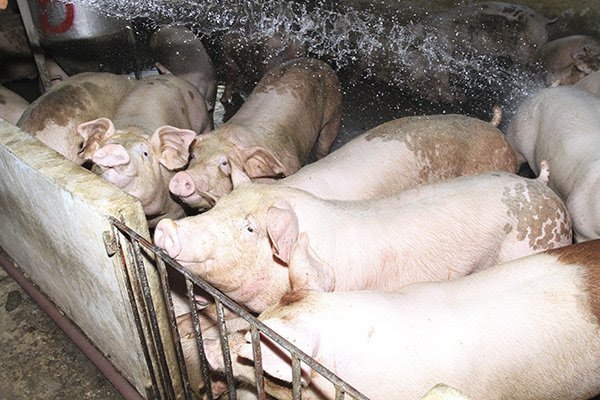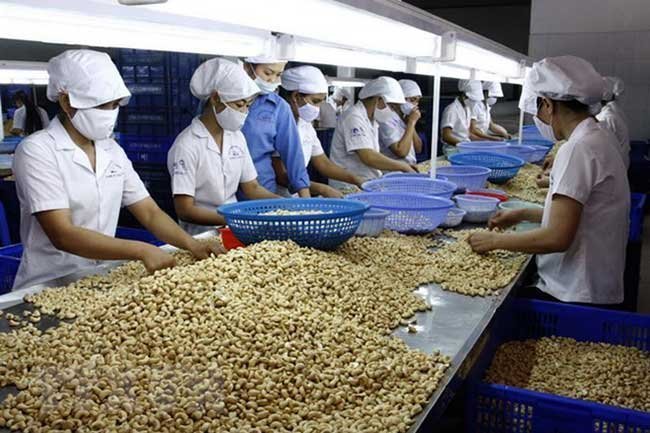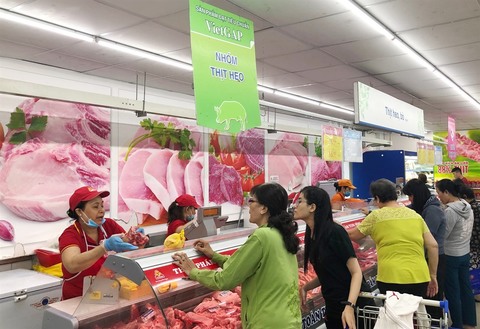Pork price forecast to drop sharply
Pork price forecast to drop sharply
Pork prices on the local market are dropping by some VND5,000-VND8,000 per kilogram versus those recorded in late February, due to the spread of African Swine Fever (ASF). The price is forecast to continue falling in the coming time.

Data from the Domestic Market Department under the Ministry of Industry and Trade shows that the live pig price hovers between VND34,000 and VND36,000 per kilogram in the northern region, where multiple provinces were hit by ASF.
Localities in the Central and Central Highlands regions saw the pig price ranging between VND32,000 and VND41,000. Meanwhile, the pig price in the south remains relatively higher than in other regions, at VND39,000 to VND45,000 per kilogram.
With the complicated development of ASF, the pig price may fall even further in the coming days, remarked a representative of the Domestic Market Department.
A sudden rise in the pork supply was recorded at wholesale markets as many farming households rushed to sell their pigs to avoid being hit by ASF. In addition, the demand for pork in schools and industrial zones has fallen sharply, resulting in the pig price fall.
At a regional symposium on pig farming, held on March 27 in Hanoi, Fred Unger, an expert with the Centre for International Migration and Development, at the International Livestock Research Institute, noted that ASF and the blue-ear pig disease have prompted many locals to boycott pork products.
Also, the reduction in pork consumption among the locals was ascribed to the abnormally high number of children testing positive for porcine tapeworms in Bac Ninh Province, stated the expert. ASF does not infect humans, so the locals do not have to worry about eating pork at present, the expert stressed.
However, the local livestock sector has been negatively affected by the spread of ASF as no vaccines against the disease have been successfully produced to date. It also faces many obstacles including low productivity and unstable product quality, he said.
The tropical climate and household farming near residential areas, which failed to meet hygiene standards, are considered the causes of the disease’s outbreak.
The large number of culled pigs accounts for a mere 0.1% of the country’s total pig supply, according to the Ministry of Agriculture and Rural Development. Data from the General Statistics Office showed that the pig farming business is seeing healthy growth, with the total number of pigs raised in the country last month seeing a 3% year-on-year increase.
The Domestic Market Department confirmed that the domestic supply of pigs still meets demand for pork consumption among the local people, as well as for processing activities.


























